LED lighting and sensor technology analysis
LED lighting switch automatic control
As a device for signal acquisition and electromechanical conversion, the electromechanical technology of the sensor is quite mature. In recent years, the rise of MEMS technology has made the sensor technology a step toward miniaturization, intelligence, multi-function and low cost. Various types of sensors, such as photosensitive sensors and infrared sensors, can be combined with LED lighting fixtures to form an intelligent control system. The sensors convert various collected physical quantity signals into electrical signals, which can be integrated into the AD converter, MCU, and DA. The converter intelligently processes the acquired signals to control the opening and closing of the LED lighting fixtures. Humans can set various control requirements on the MCU to control the switching time, brightness, color rendering, and colorful changes of the LED lights, thereby achieving the goal of saving energy and saving energy. The system block diagram of the sensor and LED luminaire is shown in Figure 1. The current integrated circuit manufacturing technology has been able to integrate AD, DA, and MCU in a 5X5mm or smaller package, and it is convenient to install in the luminaire.

Figure 1 Sensor and LED luminaire system block diagram
Photosensitive sensor combined with LED lamp
Wind-electric LED street light is a highly intelligent and unattended road lighting fixture that uses wind and sunlight to generate electricity and uses batteries to store energy. Therefore, automatic energy management is very important. Photosensitive sensor is an ideal electronic sensor that can control the automatic switching of the circuit due to changes in illumination during dawn and sunrise (sunrise, sunset). Figure 2 shows the appearance of a photosensor. Figure 3 is a photosensor plate of a photosensor that is very sensitive to the brightness of light. Figure 4 is a basic schematic diagram of photoelectric conversion. The working principle of the light control LED lamp lighting system is shown in Figure 1.
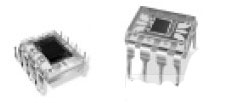
Figure 2 Appearance of a photosensor
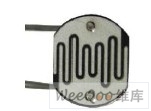
Figure 3 Photosensitive resistor plate of photosensor
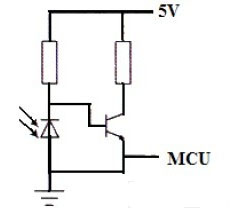
Figure 4 Basic schematic diagram of photoelectric conversion
Photosensitive sensor can automatically control the opening and closing of LED lighting in shopping malls according to weather, time zone and region. Reduce power consumption by reducing its output power during bright daylight hours, and convenience stores with a store area of ​​200m2 can reduce power consumption by up to 53% compared to when using fluorescent lamps. The life span is also about 50,000-100,000 hours. Under normal circumstances, the life of LED lighting fixtures is about 40,000 hours; the color of the illuminating light can also adopt the RGB colorful and changing way, which makes the shopping malls more colorful and more active; and the original blue LEDs with the phosphor used Compared with purple LEDs with red, green and blue phosphors, the color rendering is higher.
Infrared sensor combined with LED lamp
Infrared sensors work by detecting infrared rays emitted by the human body. The main principle is that the infrared radiation emitted by the human body is about 10um, which is enhanced by the Fresnel filter lens* to the pyroelectric element PIR. When the person moves, the emission position of the infrared radiation changes, and the component loses the charge balance. The pyroelectric effect releases the charge outward, and the infrared sensor (PIR) converts the change of the infrared radiation energy through the Fresnel filter lens into an electrical signal, that is, thermoelectric conversion. When there is no human body moving in the detection area of ​​the passive infrared detector, the infrared sensor senses only the background temperature. When the human body enters the detection area, the pyroelectric lens senses the human body temperature through the Fresnel lens. The difference in background temperature, after the signal is collected, is compared with the existing detection data in the system to determine whether an artificial infrared source or the like enters the detection area.
Passive infrared sensors have three key components: Fresnel filter lenses, pyroelectric infrared sensors (PIR) and matched low noise amplifiers. The Fresnel lens has two functions: one is the focusing effect, which is to refract the pyroelectric infrared signal on the PIR: the other is to divide the detection area into several bright and dark areas, so that the moving object (person) entering the detection area A modified pyroelectric infrared signal can be produced on the PIR in the form of a temperature change. It is also generally matched with a low-noise amplifier. When the ambient temperature on the detector rises, especially when it is close to the normal body temperature (37 °C), the sensitivity of the sensor decreases, and the gain is compensated by it to increase its sensitivity. The output signal can be used to drive an electronic switch to achieve switching control of the LED lighting circuit. Figure 5 shows the appearance of the infrared sensor, and Figure 6 shows the internal structure and internal circuit of the infrared sensor. Figure 7 is an LED lighting fixture with infrared sensor. This is an E27 standard screw base lamp. Its power supply range is AC180V-250V (50/60Hz). The infrared sensor detection range is about 3M-15M. The standard product IFS-Bulb 3W lamps are up to 80 lm and the 5W lamps are up to 140 lm. An infrared sensor is embedded in a central portion of the LED light source module. Once the infrared sensor detects the person's temperature, the LED bulb will automatically turn on and off within 50 seconds. Suitable for any indoor application such as corridors, storage rooms, stairs and entrance to the lobby.
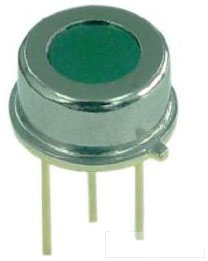
Figure 5 appearance of the infrared sensor
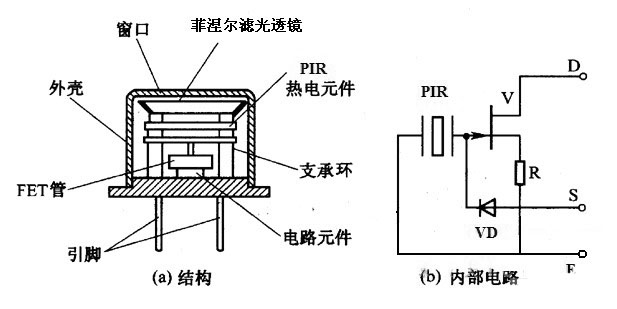
Figure 6 Internal structure and internal circuit diagram of infrared sensor
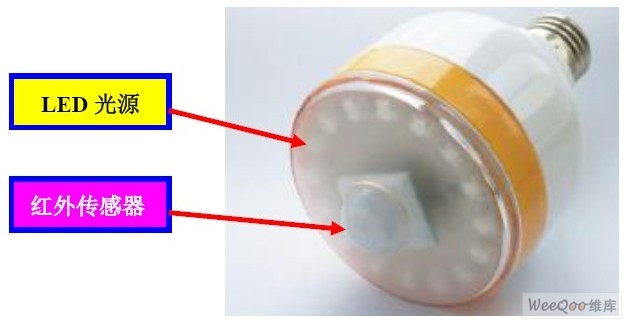
Figure 7 LED lighting with infrared sensor
Ultrasonic sensors similar to infrared sensor applications have found more applications in the automatic detection of moving objects in recent years. The ultrasonic sensor mainly uses the Doppler principle to emit a high-frequency ultrasonic wave that is more than the human body can perceive through the crystal oscillator. Generally, a 25 to 40 kHz wave is selected, and then the control module detects the frequency of the reflected back wave. If there is object motion in the region, the reflection The wave frequency will have a slight fluctuation, that is, the Doppler effect, in order to determine the movement of the object in the illumination area, thereby achieving the purpose of controlling the switch. Figure 8 is an application of a combination of an ultrasonic sensor and a microprocessor.